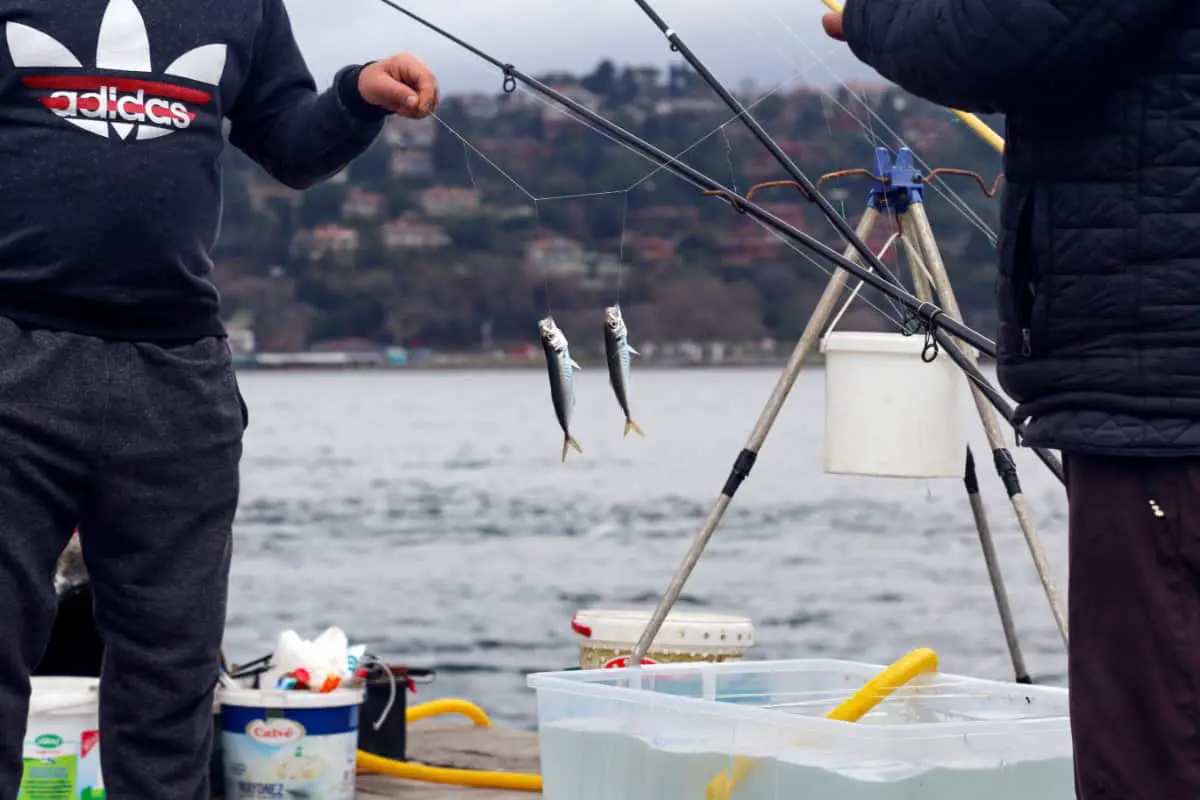When choosing the most effective live bait to use, you first must know what type of fish you want to attract. If you are fishing in saltwater, the desired prey of your intended catch is going to differ from freshwater fish, so you must plan accordingly.
The 14 best bait for saltwater fishing includes Atlantic menhaden (Bunker), Yellowfin Menhaden (Pogy) and Gulf Menhaden (Pogy), Atlantic Herring, Hickory Shad, Atlantic Thread Herrings, Scaled Sardine (Pilchard), Scaled Sardine (Pilchard), California Anchovy, Pacific Sardine (California Pilchard),Top Smelt, Big Eye Scad (Goggle Eye), Atlantic Croaker, Silver Hake, Squid (Shortfin and Longfin).
While watching people catch fish, it may appear simple, but each angler will usually have the very appropriate gear, including bait. While some choose to use artificial lures, many others make use of live bait.
What Are The 14 Best Baits for Saltwater Fishing?
When planning a fishing trip, you need to have the correct bait. In May of 2019, Sport Fishing Mag highlighted several of the top saltwater baits you have to choose from.
I highlight several of them here:
1. Atlantic Menhaden (Bunker)
These fish live along the Northeastern seaboard. Although easy to catch, their lifespan in captivity is relatively short, be cautious with how you choose to store them once caught.
2. Yellowfin Menhaden (Pogy) and Gulf Menhaden (Pogy)
These fish are often found along the southeastern seaboard and prefer to live in warmer water. While the Gulf Menhaden can be found in the Gulf shore region stretching west.
These varieties can be very plentiful, but they are extremely sensitive to water conditions and cannot survive in the high salt content of ocean water.
If you choose to use these, storage is crucial to their survival.
3. Atlantic Herring
These fish frequent the northern regions during the colder months of the year. If you choose to use herring, you must be delicate when catching them because they are considered one of the more fragile fish species.
4. Hickory Shad
These fish are found in several regions and are like the various species of Menhaden. Use caution when catching and storing them to help prolong their life.
5. Atlantic Thread Herrings
You will find these fish in saltier waters. They are easier to store as they are more robust when dealing with various conditions.
However, when you are taking them from their storage container, you must use a net.
The oil on your hands can kill them. So, although hearty, you must use care when tending to and handling them for bait.
6. Scaled Sardine (Pilchard)
These fish inhabit the waters from North Carolina to the Gulf of Mexico. They are one of the most challenging baitfish to catch, which makes them very valuable in the fishing world.
Sardines are the preferred bait when fish just don’t seem to be interested in anything else.
Catching sardines is not easy, as they cannot survive after being caught with a net, therefore special tools need to be used.
7. California Anchovy
These are considered a very fragile type of bait, meaning they don’t have a high survival rate once caught; because of their fragility, many anglers opt-out of using them.
8. Pacific Sardine (California Pilchard)
You can find several different species of sardines, depending on the water temperature . They are a hearty bait to use, but they have specific oxygen needs.
. They are a hearty bait to use, but they have specific oxygen needs.
Thus, it is essential to store them well to ensure their longevity.
9. Top Smelt
These fish can be found just outside the surf and can survive for extended periods if given fresh water at specific intervals.
10. Big Eye Scad (Goggle Eye)
This type of bait is rather large and is popular in tournament fishing. This may or may not be something that you would choose to use when surf fishing.
It depends on the type of fish you are hoping to catch .
.
11. Atlantic Croaker
These fish are often found on the coast of North Carolina and can be found in crab traps. They are popular baitfish that are typically imported for use.
12. Silver Hake
Silver Hake is a challenging bait to catch, but it’s a favorite when fishing for tuna.
13. American Eel
This is a very hearty live bait; in fact, they can live out of the water for several days. I recommend that you store live eel in a bucket covered with seaweed until you are ready to use them.
They are widely available to purchase as well.
14. Squid (Shortfin and Longfin)
Most fish will readily eat squid. Squid are rather sedentary in the water, so fish don’t have to chase them to get a meal, which makes them fantastic for use as bait.
If you are interested in learning more about catching any of the bait listed above or seeing more suitable saltwater bait, check out the Sport Fishing Mag website for more details.
website for more details.
It is full of great information that can help anyone preparing to gather their own bait for surf fishing.
Why Choose Live Bait?
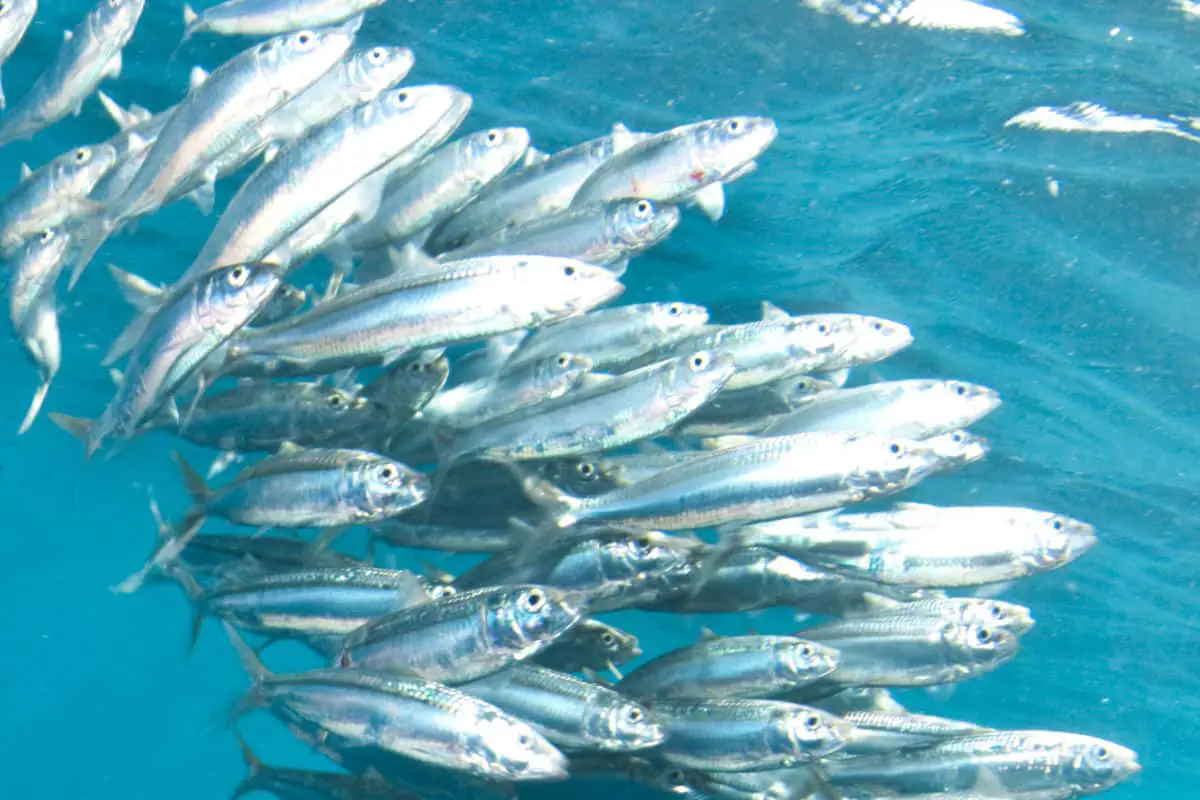
Research has shown fish diets to be quite like humans, but many fish are carnivores, also known as meat-eaters. Knowing this will help dictate the type of bait you chose to use.
Choosing live bait will surely appeal to most of the predatory fish in the water bodies where you may want to fish. Carnivorous fish are natural-born predators.
When they see the bait and feel its movement in the water, they are much more likely to strike.
Fish are always on the lookout for their next meal, so when presented with the opportunity to feed, they are more than likely going to take it.
How Can Fish Tell if The Bait is Live?
Fish are remarkable creatures and are fully equipped to detect a live meal. An essential part of fish anatomy is the lateral line, which allows them to quickly detect vibrations in the water.
If you have ever been to a stream that is teeming with minnows, you probably notice how quickly they scatter if you disturb the water.
Because of their lateral line, they can feel the water’s vibration, which is a good indicator that danger may be present.
Often, fish will not only detect the vibration of the water, but they will also be able to see the prey that is near them.
Scientists have determined that fish have a visual system that is comparable to humans.In an article by Rick Windham, he demonstrated that the eyes of fish contain the same cells as human eyes.
The only differences are a protective film over their eyes and superior night vision capabilities. The cellular makeup can see color and various shades of gray, much like humans.
This offers the fish a great deal of protection against predators, but it also allows them to hunt for prey successfully.
Where Do I Get Live Bait?
Live bait is quite easy to find, but if you are choosing to gather your own live bait, you need to have a plan in place, or you will spend a lot of time doing so.
Most fishers choose to purchase their live bait, which eliminates the task of catching it.
Purchasing Live Bait
You have probably driven past many live bait machines, which are typically placed outside of convenience stores on your way to the lake or coast. There are also live bait options in most sporting goods stores.
Like anything, the quality is not always the same, so you need to be aware of where you purchase your bait.
Vending Machine Bait
When searching a vending machine for bait, your options will be limited.
The premise behind bait vending machines was to create easy accessibility for people heading out on the water before brick and mortar stores were open for the day.
The vending machines are climate controlled to provide you with the best quality bait possible from a machine but remember it probably isn’t as fresh as it could be, which may hinder its efficacy.
If you are using a vending machine to purchase bait, they are not all created or maintained with the same consistency. The machine does not track the age of bait.
It is the owner’s responsibility to be aware of the stock’s age and freshness.Because there is a lack of consistency, you may find yourself purchasing dead bait.
Most vending machine owners pay special attention to the age/quality of their bait, but there are outliers, so be aware.
When looking for bait in a vending machine, you will find a wide variety of options to choose from.
Gone are the days of nightcrawler and earthworm dominance; many vending machines offer live minnows and other small fish as well.
When heading out to surf fish, this variety of choices can be extremely beneficial to you.
Gather Your Own Bait
If purchasing bait for surf fishing isn’t something you want to do, you always have the option of gathering your own bait.
While the result will be fresher and more cost-effective, collecting your own bait comes with its own challenges.
Live bait is plentiful near the water. However, it is not always easy to spot and catch, so patience is key.
How Do I Store Bait Effectively?
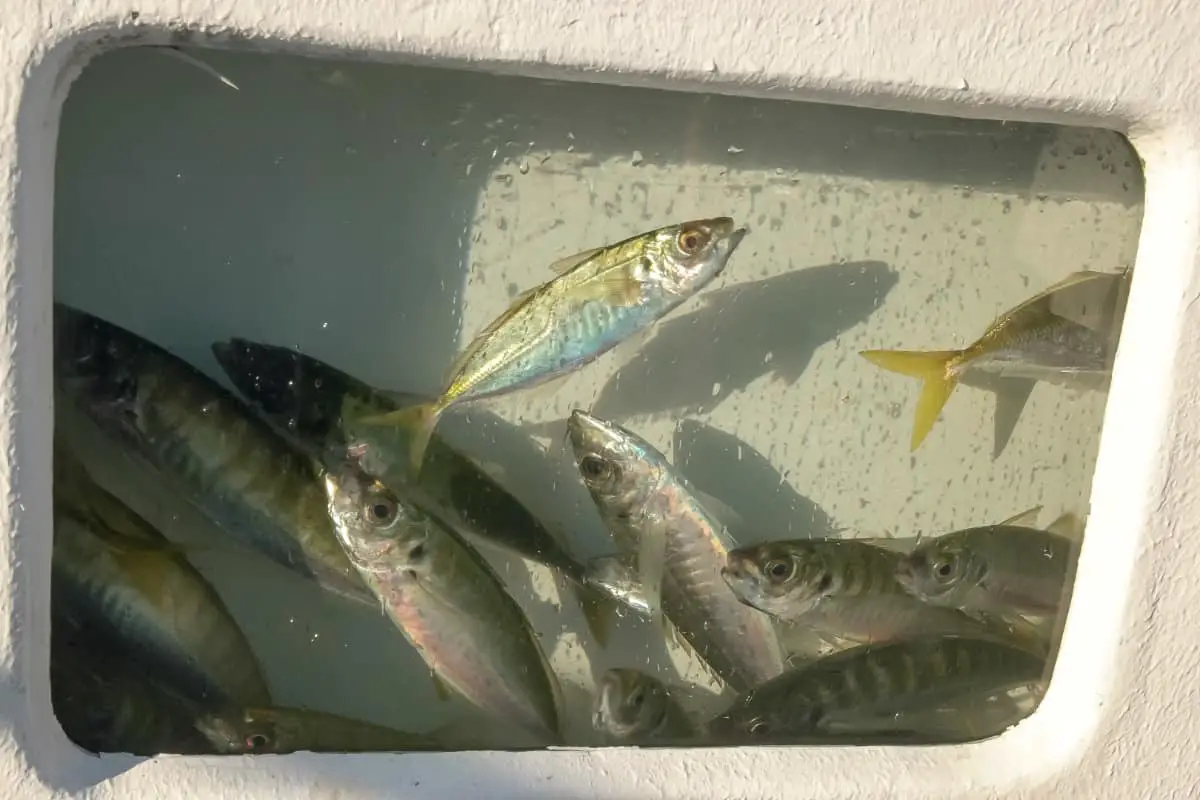
When it comes to storing live bait, it can be a bit overwhelming to see the variety of options available. Here are eight options that may be of interest to you:
Insulated Bait Buckets With Built In Aerators
One type of storage unit you may choose to use when storing bait is an insulated bucket or cooler.
These bait buckets contain their own aerator, which allows air to flow continuously into the water of your bucket and saves you time spent on adding freshwater during your fishing trip.
When you are choosing a bait storage unit, you want to determine your exact needs. Are you planning to be out on the beach for several hours or for a short time?
If you are going to be gone for several hours, you will want to determine the exact battery life of the aerator or if there is an outlet option to plug it into a car.
If the batteries die while you are in the middle of your trip, you won’t be able to maintain the life of your baitfish.
What are Some Bait Storage Options?
There are hundreds of options when it comes to bait storage. When searching for just the right storage system, you need to determine the purpose of your purchase.
Sure, you want to keep your bait alive, but for how long?
How much bait are you planning to store? Do you want to deal with batteries? Do you want a built-in net system?
Once you have answered these questions, you are ready to search for the perfect bait storage system for your purpose.
There are many popular and highly rated products on the market.
Below is a list to some that came up with a simple bait storage system search:
- Frabill 4825 Insulated Bait Bucket with Built-in Aerator

- Frabill Magnum Bait Station 13 Quart Live Bait Well, White and Yellow

 Engel Coolers 13 Quart Live Bait Cooler/Dry Box with Air Pump
Engel Coolers 13 Quart Live Bait Cooler/Dry Box with Air Pump
- Marine Metal PBC-20 20-Gallon Bait Saver Livewell System, White Finish

- GenieJar Cipher Live Bait Container, Black, 17 oz

There is a lot of good products out there, but after some research, they were the economic front runners in the live bait storage arena.
Most of the containers have a significant proportion of positive reviews from people that have used them.
If you are still confused about which type of bait storage is right for you, you may wish to head to a sporting goods store or speak with an experienced angler that uses live bait frequently.
What Tools Do I Need to Catch Bait?
This question is one that has probably been swimming around your mind since beginning to read this article.
While I wish there were a simple answer to this, there isn’t. The tools you use to catch bait are going to be dependent upon the type of bait you are after.
Remember, earlier in the article, I spoke about the fish that cannot tolerate the oil from your skin.
There are also some baitfish that have a slimy coating on their bodies. If you remove this coating, it will shorten their life drastically.
Different Type of Tools You Can Use to Catch Bait
Many devices on the market can be used to catch your own bait for surf fishing, but not all tools are created the same or are meant for the same purpose.
Here are some of the top bait catching tools:
The Sabiki Rig
This tool consists of multiple tiny hooks strung together. When you drop the rig into the water, you can catch numerous fish at a time, which saves time when fishing for your own bait.
This is a standard tool, but it takes persistence and practice to utilize it correctly.
You also need to understand that there are specific classifications of Sabiki Rigs . According to discoverboating.com, You will find them classified by; style, size, branch strength, and mainline strength
. According to discoverboating.com, You will find them classified by; style, size, branch strength, and mainline strength
Tom Gatch explains how to effectively use a Sabiki Rig when catching your own bait on liveabout.com. Before you begin this adventure, you may wish to read a bit more about using the Sabiki Rig and its origins.
If you are research-minded, you can find some great information on the website Outdoor Life.
Cast Nets
There are a wide variety of cast nets available on the market. Like many other tools, they are not all created equal, and you need to be very specific about the type of bait you are planning to catch.
Here are some of the more common cast nets that you may use:
What Are Some Different Cast Net Brands?
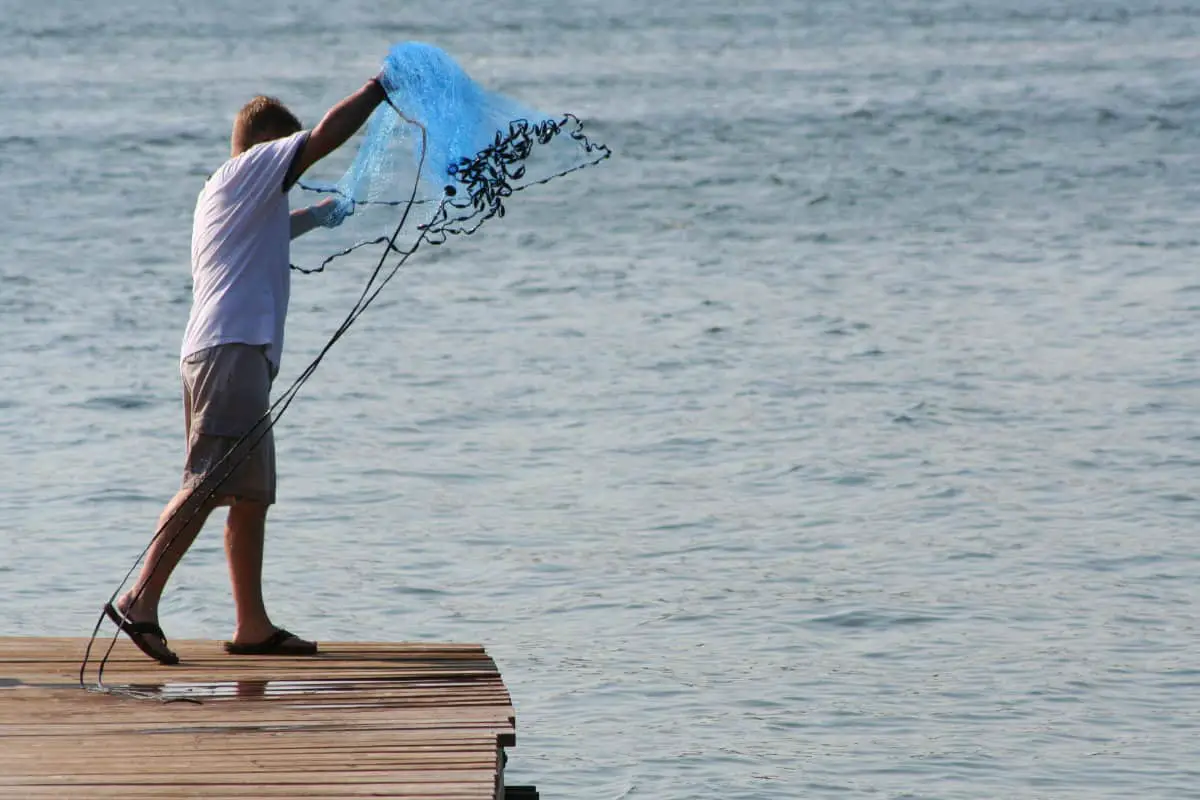
A wide variety of brands manufactures cast nets. Again, you need to determine your specific needs before diving into a purchase.
This is a piece of equipment that could help you exponentially when it comes to catching baitfish.
Some of the more popular brands are:
 Ahi USA
Ahi USA
- Betts Old Salt Premium

- Bait Buster

- Bait Buster Mullet Cast Nets

- South Bend CNMO7 Mono Fil Cast Net 7 X 3/8

- Calusa Cast Nets – 5/8 Inch x 10 Foot
- EASY BIG American Fishing Cast Net

When searching for a net, be sure to determine the size as well as the weight of the rope.
If you are going to attempt to catch live baitfish, you don’t want to use a lightweight net, just as you don’t want a heavyweight net if you are hoping to pull in sardines.
How Much Does a Good Cast Net Cost?
The cost of cast nets varies widely, and the price point will be determined by the type of bait you are trying to catch.
Obviously, you will need a heavier net for larger baitfish—the cost of the nets listed above ranges from $50 to $250.
You may be able to find a cast net for less than $50, but you run the risk of sacrificing quality when looking at a lower price point.
Pinfish Traps (Fish Pots)
This is a vinyl-covered mesh trap that lets fish into the trap but does not allow them to get back out.
These traps can also be used for catching crabs. The design of the pinfish trap is ingenious yet simple.
There are a lot of pinfish traps on the market with a variety of prices and sizes. If you can exercise patience when catching your bait, this may be the way to go.
The average cost of a pinfish trap is between $30 and $95. They come in several different colors; the most common colors I have found are red, black, and white.
Some anglers swear by lighter colors when using them closer to shore, while others prefer the darker shades to mask the trap from the fish.
At the end of the day, it is mainly personal opinion and a choice that needs to be made based on your particular wants and needs.
How Do I Attract Live Bait?
When you are attempting to catch anything, you need some way to draw in your catch. When trying to attract baitfish, it is essential to know what they eat.
Remember, when they get hungry, they are going to forage for food. On the Gone Outdoors website, James Clark offers some great tips to attract baitfish.
Glow Sticks
Yes, you are reading that correctly. If you are trying to attract bait at night, you can use glowsticks with a net or other trap discussed above.
Organisms that baitfish feed on are attracted to light; thus, baitfish are also attracted to light sources.
This strategy will only work at night, so don’t try to take glowsticks out in broad daylight because they won’t work.
Crushed Breadcrumbs or Pork Rinds
Think about how you would feed your pet fish. When you drop the food into the tank, they immediately surface and begin gulping down the food. Baitfish will react similarly to this feeding practice.
How Long Can Live Bait Survive?
There is not an easy answer to this question. There are multiple factors at play for the length of time live bait can survive once caught. One common school of thought ties back into aeration.
Aeration is a technical method of providing the correct amount of oxygen to the captive bait.
Many of the bait storage containers detailed earlier had an aeration component, but once again, not all aeration devices are the same.
The Cyber Angler has fantastic information on aeration; they discuss the pros and cons, as well as how to effectively use aeration to help your bait survive longer while in the bucket.
Like all the tools discussed previously, aerators come in a variety of styles and sizes. Each one is suited for a particular type of bait.
If you want to provide longevity to your bait, it is going to be essential to aerate the water in which they are stored properly.
How Do I Actually Use Live Bait?
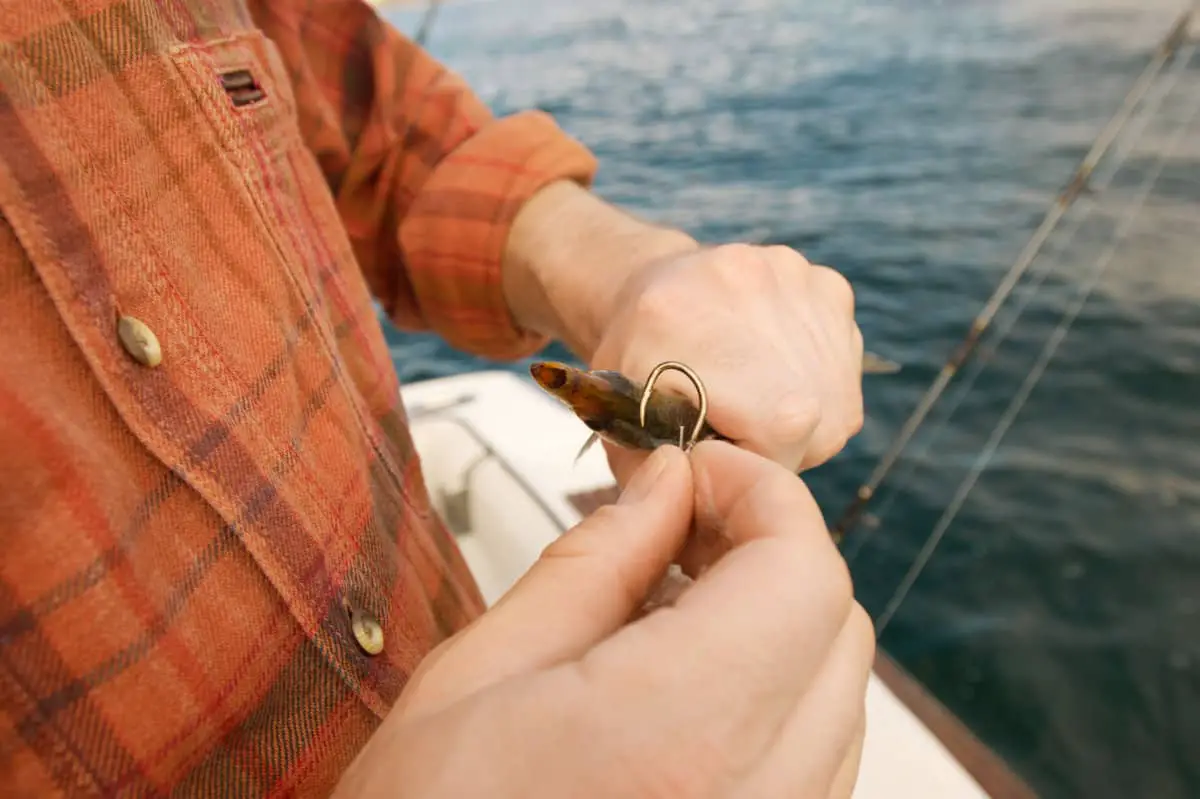
When using live bait, it is critical that it is still alive when you cast your line. If you don’t hook your bait correctly and it is lifeless when hitting the water, you have wasted a lot of time and energy. When baiting your hook, you need to follow some essential steps.
I found a helpful Wiki article that details the process of rigging live bait:
- Carefully remove the bait from its habitat or your bait storage unit. Remember, some fish are ultra-sensitive to the oils on our skin.
- Be sure to have a firm grip on the bait you are using. The last thing you want to see happen is your bait flipping back into the water.
- Hook the baitfish through the body just behind the dorsal fin. This will allow the bait to stay alive as you cast.
- Alternately you can hook the fish through the lips or nostrils, but the hook won’t hold them as securely allowing them to escape more easily.
Use a split-shot rig with a sinker to help maintain an appropriate depth for your bait.
- You need to know the depth of the type of fish you are planning to catch when choosing a weight for catching bait.
- After casting, keep a light touch on your line. The bait is going to provide movement to attract fish. If you pull the line to hard, you may risk losing the bait to a hungry fish.
Is Using Live Bait Worth the Hassle?
After reading this, you may be wondering if catching live bait is worth the hassle. It is much more complicated than luring small fish in and scooping them up with a net, but the use of live bait often yields good results.
Bestbait.com wrote a great comparison article about live bait and artificial lures. They provided three of the primary reasons live bait may be a better option.
- You are offering fish something they want to eat.
- The scent of live bait will attract the fish.
- The fish want to eat; thus, they will strike at bait quite readily.
Like anything, there are also downfalls to using live bait. Best bait mentions:
- It’s a messy endeavor.
- Their availability is limited because they can’t be stored as easily as artificial bait
 .
. - Maintenance is tricky.
Summary
As you get ready to head out for a day of fishing, I hope I provided you with some helpful tips to catch your own bait. Yes, it can be time-consuming, and bait may be short lived as well as unpredictable, but it is sure to provide you with a fishing experience you will not soon forget, for better or worse.

